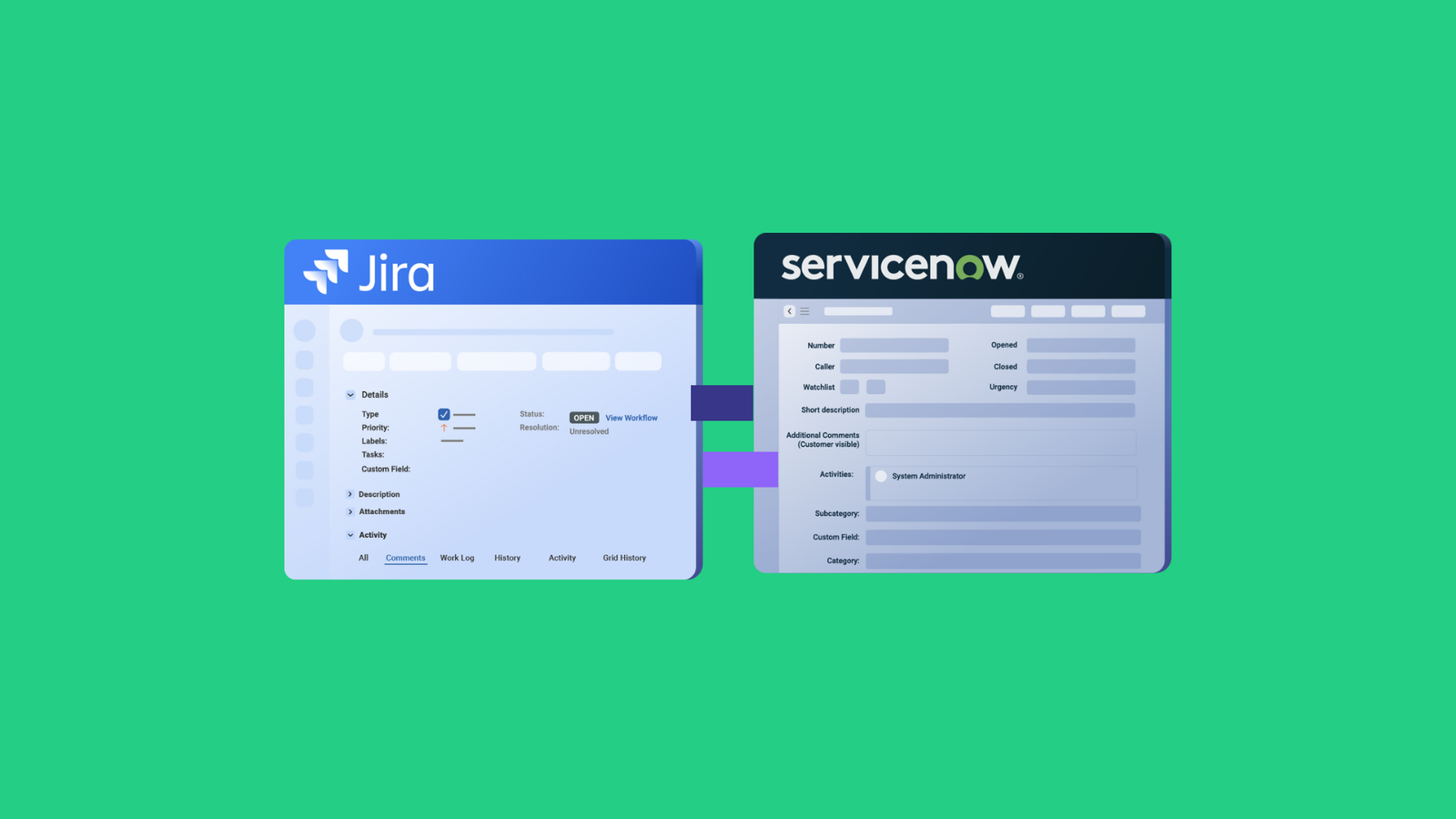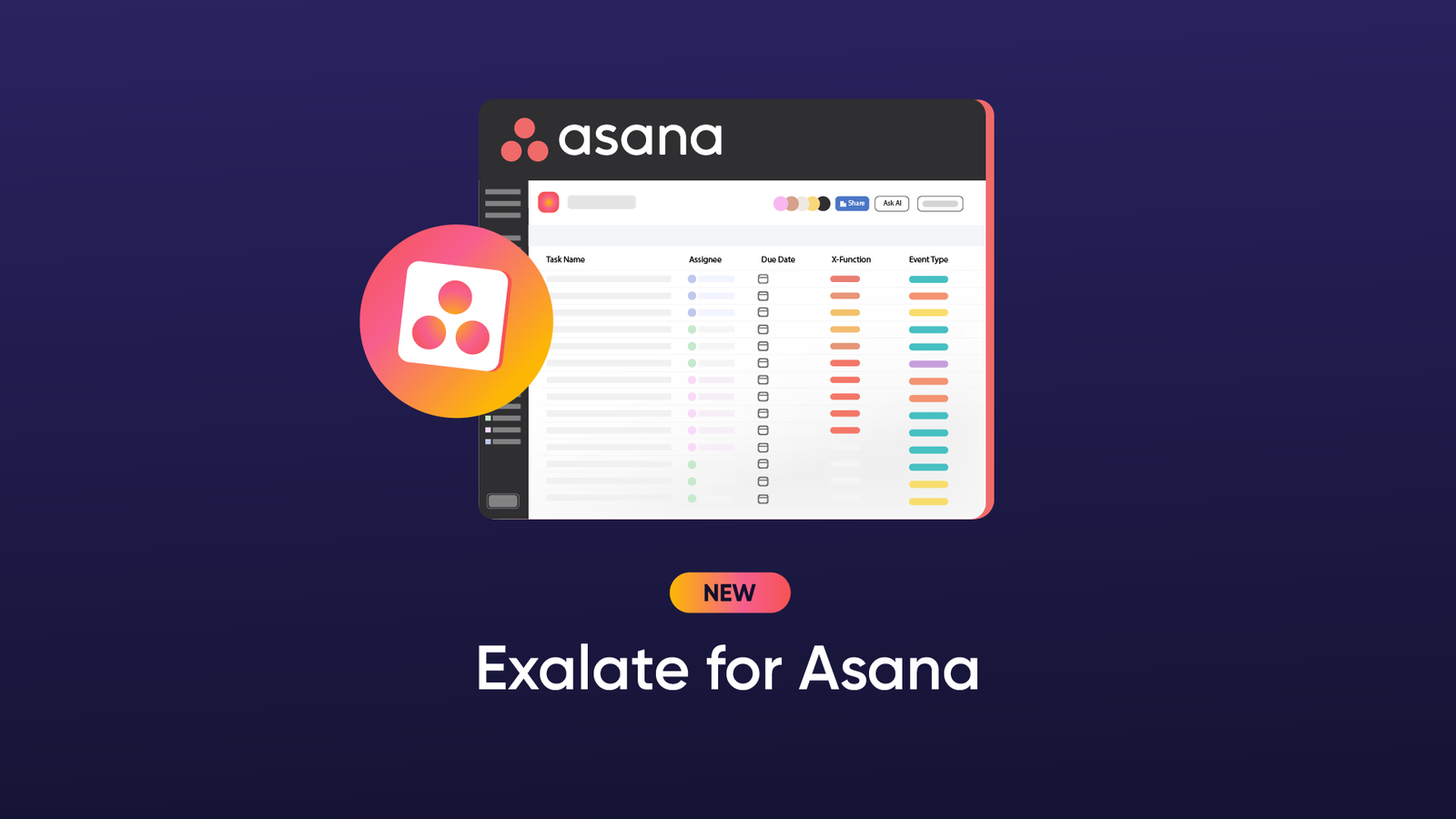Freshdesk and ServiceNow both provide a broad range of tools and functionality for service delivery. Teams working with them can often benefit by sharing their data, and to do that effectively, you need a Freshdesk ServiceNow integration.
But delivering an integration is serious business. There are security implications, and teams need to know they can keep control of their information. The integration needs to be reliable, too.
In this article, you’ll learn about the benefits of integrating these platforms, along with the pitfalls and challenges you might face. You’ll also learn about Exalate, an integration tool designed to overcome these problems, while giving you all the control you need to maximize the benefits available.
Why You Need a Freshdesk ServiceNow Integration
Freshdesk and ServiceNow each have unique features. With an integration, you can have different teams running their preferred tool, taking advantage of their strengths while maintaining a common data pool. You can also share data across departments and organizations, while allowing everyone to retain full control of their data and what is shared.
What is Freshdesk?
Freshdesk is a help desk solution that lets companies provide service to customers. Based around tickets, it provides a unified workspace for teams to collaborate. It also includes workflow automation and analytics.
What is ServiceNow?
ServiceNow is a cloud-based IT service management (ITSM) platform. It allows you to streamline workflows, deliver customer service, and help desk capabilities.
Some Example Use Cases for Freshdesk ServiceNow Integration
There are many scenarios where an integration can help. Here are a few examples.
Case 1: Automate Service Workflows: Sync Ticket Status with an Incident State
When Freshdesk tickets are updated, an integration can share the changes with ServiceNow, updating the corresponding entity state, typically an incident.
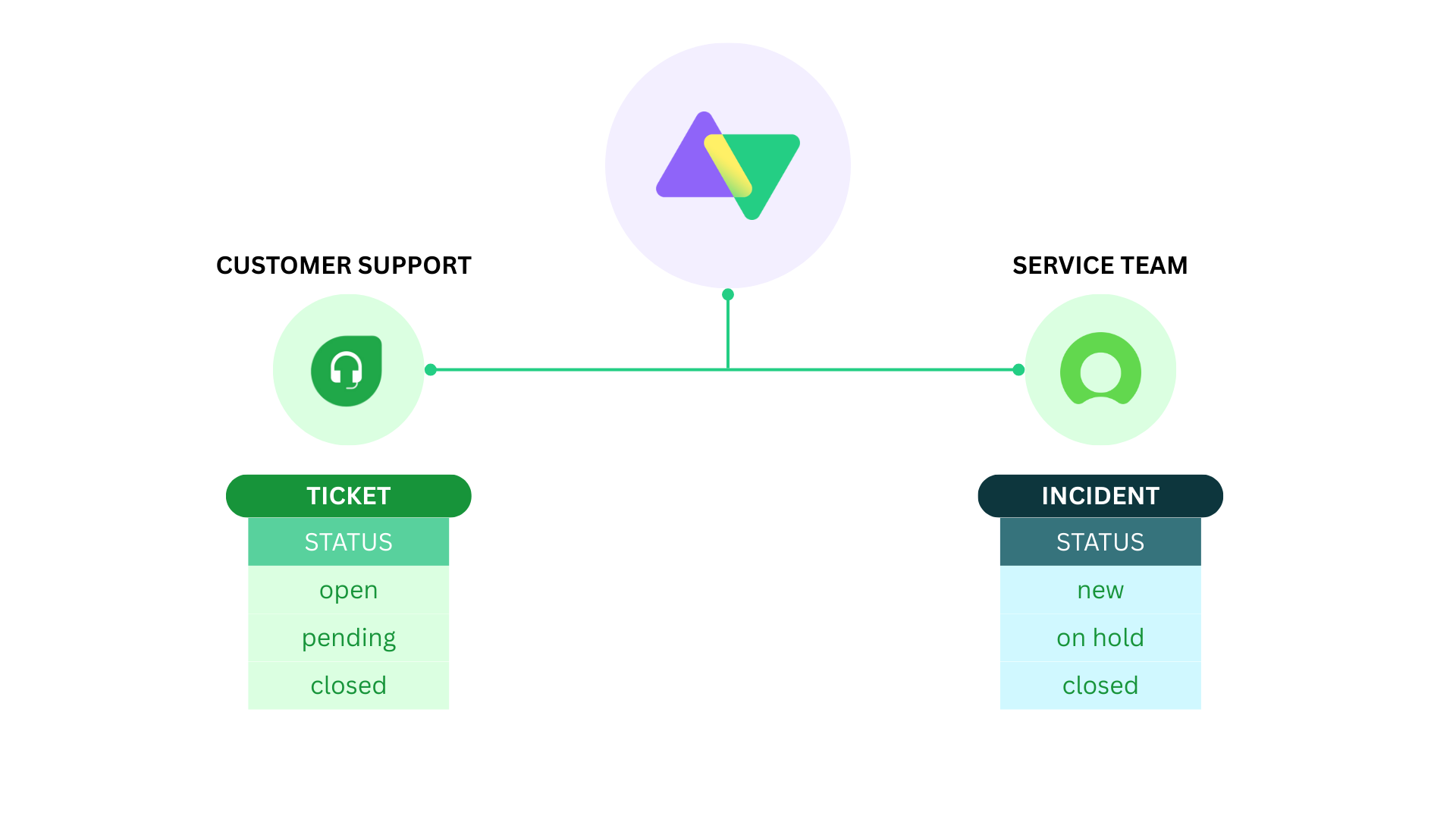
That keeps your support workflows and IT Service Management data in sync with each other, keeping multiple teams informed of progress.
Case 2: Take Advantage of ServiceNow’s Metrics
ServiceNow excels at reporting, helping you analyze metrics, like service resolution times. An integration can let you pull in data from multiple other instances of Freshdesk or ServiceNow and analyze them in one place, directly comparing your teams and services.
Case 3: Managing Assets Using ServiceNow and Freshdesk
ServiceNow’s configuration management database (CMDB) gives you a detailed picture of hardware and software assets. An integration lets you share this information with Freshdesk agents, letting them make data-driven troubleshooting decisions.
Case 4: Using ServiceNow as a Managed Service Provider for Clients on Freshdesk
You can use ServiceNow as a managed service provider (MSP) to manage customers using Freshdesk or Jira Service Management instances.
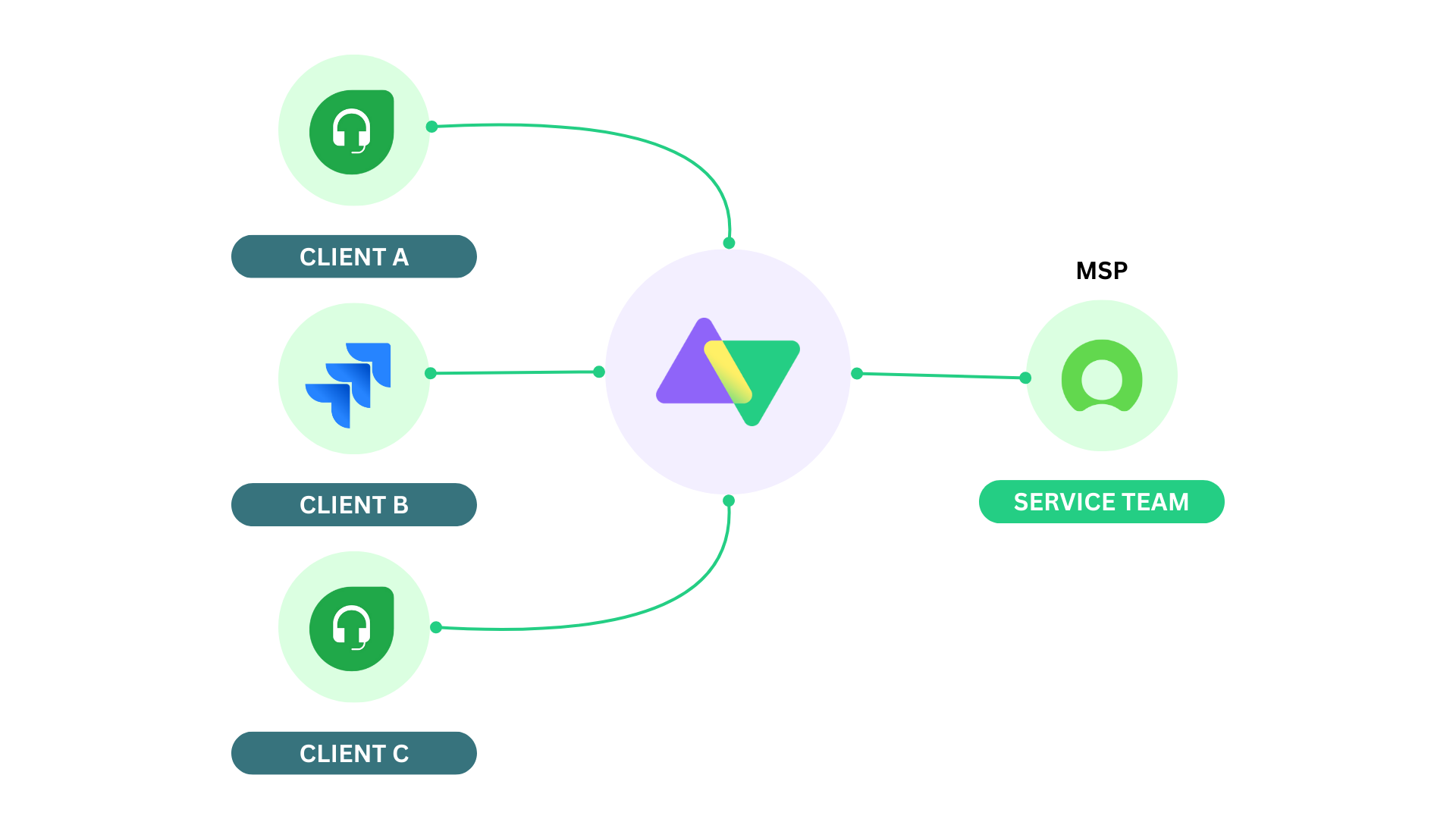
Here, you keep all the relevant tickets synced to your central system and can monitor and respond to customer issues, perhaps providing additional services like asset management and metrics to your clients.
Imagine, when a ticket is created in Freshdesk or Jira Service Management, key fields like ticket ID, title, description, priority, status, and customer details (e.g., name, email, organization) are synced with ServiceNow. For instance, a “High Priority” ticket with the title “Cannot access server” in Freshdesk would be mapped to an incident in ServiceNow, keeping the same priority and description.
Additionally, when an agent assigns or updates the status in Freshdesk or Jira, these changes are reflected in ServiceNow, ensuring that all systems stay aligned and the MSP can manage tickets, monitor progress, and provide additional services like asset management and reporting.
How to Choose the Right Tool for A FreshDesk ServiceNow Integration
Picking the right tool is the first hurdle you face when setting up an integration. There’s no native way to integrate these platforms, which leaves you with two choices. You could use a custom-built API integration, leveraging the REST API of each platform to push and pull data between them. Alternatively, you could use a middleware integration platform to do all that hard work for you.
When picking a solution, it’s important to define what you need from it, so you can make the right choice. Here are some of the most important considerations.
Flexibility
Many tools offer simple integrations that copy data from one place to another, but that’s not good enough for advanced use cases. You may want to choose how fields are mapped from one side of the integration to the other, or set precise conditions for sharing data. That requires advanced logic and scripting capabilities.
Autonomy
Most teams have data they want to keep private, so your integration tool should give you full control over what is shared. Those at both ends of the integration need to keep their autonomy over their data, so they can choose what to make available without needing to consult anyone else.
Security
It’s always important to protect your data, especially when sending potentially sensitive information to people in another organisation. The integration tool should ensure that data is protected and cannot be read by unauthorised parties.
Reliability
You need a reliable system that minimizes downtime and doesn’t let you down when you need it. The integration should be able to work without user oversight and should also be able to restore itself in the event of an outage, regardless of whether it’s a general network failure or a problem at either end of the synchronization.
Exalate is designed with all these things in mind. It’s reliable, flexible, and, thanks to its decentralized architecture, provides autonomy to users on both sides of the connection. It also offers comprehensive security features, including encrypting data in transit and at rest.
How to Set up a Freshdesk ServiceNow Integration
Here’s how to set up your integration with Exalate. Integrating systems might seem daunting, but Exalate can be up and running in minutes. Just follow these steps.
Step 1: Install Exalate on Freshdesk
To get started with Exalate on Freshdesk, you need to request an Exalate node from our integrations page. Once you’ve provided your information, you’ll be redirected to a page where you can access your node. You should bookmark this!

After that, you need to enter the following data in the form:
- Tracker URL: Your Freshdesk instance where Exalate is installed.
- Exalate URL: Your Exalate node. You’ll receive this from Exalate.
- User: The proxy user you’re using to interact with the Exalate node.
- Password / API Token: The API key for your proxy user. Read more here.
Next, enter the details of the user who will use and configure Exalate.

After this, you’ll get an email with a confirmation link. After clicking that, you’re ready to move on to the next steps.
Note: Watch the video of the installation process for Freshdesk here.
Step 2: Install Exalate on ServiceNow
To request a trial for ServiceNow, visit the Exalate integrations page.
The Exalate team will then reach out to provide you with your Exalate node.
Once you have your ServiceNow node URL, you can access your Exalate node by downloading the XML file from the documentation page, which contains the necessary information for ServiceNow to access your Exalate node.

Log in to your ServiceNow account and search for “System Update Sets” in the “Filter navigator” search field.
Under the “Related Links” section, click the link that says “Import Update Set from XML” and upload the XML file you downloaded earlier.
After the upload, preview the update set and, if prompted, click “Accept remote update.”
Finally, click “Commit Update Set” to complete the ServiceNow installation. Exalate will now be ready on ServiceNow, and you can set up the connection between the platforms.
For detailed instructions on installing the Exalate agent on ServiceNow, refer to the Exalate documentation.
If you prefer video instructions, you can watch the tutorial on how to install Exalate on ServiceNow.
Step 3: Connect Your Platforms
Next, you need to connect Freshdesk to ServiceNow. This tutorial assumes both instances are connecting over the internet. You can also set up connections between instances behind a firewall.
You can start creating the connection from any side. In this section, I’ll start from the Freshdesk instance. In the Exalate admin console, go to the “Connections” screen and click “Initiate connection”.
Enter the “Destination instance URL”; in our case, it’s ServiceNow.

There’s a choice to make now. You need to choose between Basic and Script mode connections. Basic is the easiest to use, comes with a free plan, and pre-defines the mappings between entities.
With Script mode, you can use a Groovy-based language to manually edit rules that define what is mapped to what, and when.
It’s possible to start with a basic connection and then switch to Script mode later as you develop an understanding of how Exalate works and how you can tune it to get more from it.
The Basic Mode
If you choose Basic mode in the screen above, you’ll be asked if you have admin access to the ServiceNow instance.
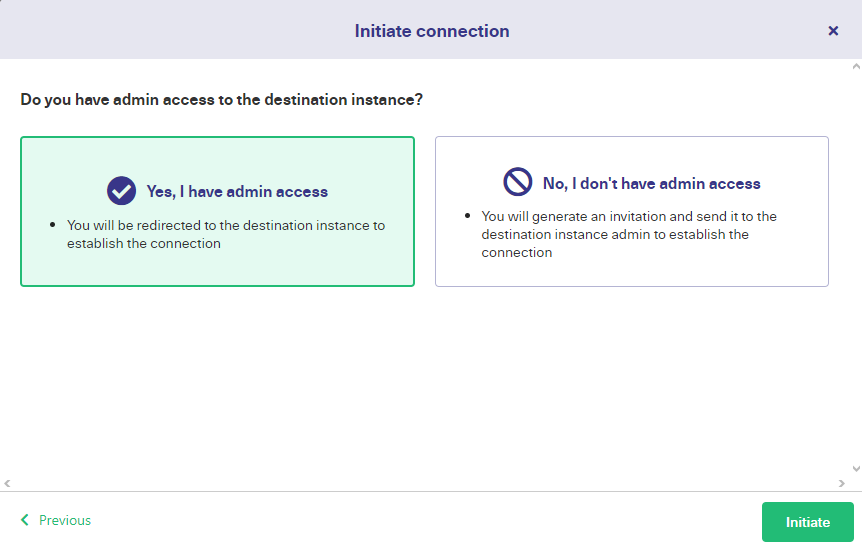
Click yes if you have access, otherwise, you will need to generate an invitation code. We will discuss how to do that in the Script mode section.
After a quick verification, you can directly enter the Freshdesk ticket number or the ServiceNow incident number to start your first synchronization with Basic mode. You cannot change the mappings or the configuration in the Basic mode.
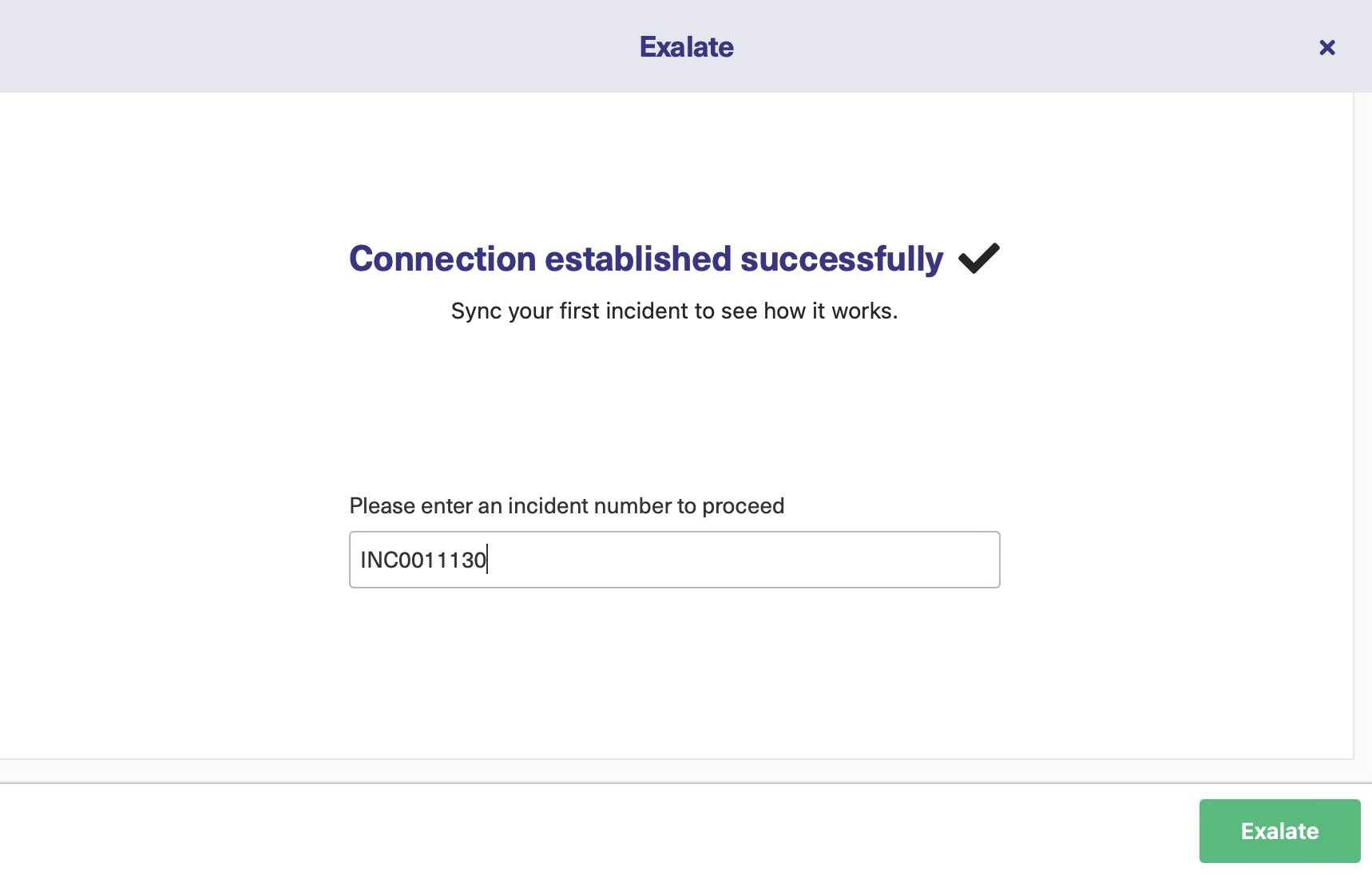
The Script Mode
In Script mode, you need to enter a few extra details, including names for each side of your connection, and a name for the connection, along with a description.
If you select the Script mode in the screen for mode selection and click “Next”, an invitation code will be generated.
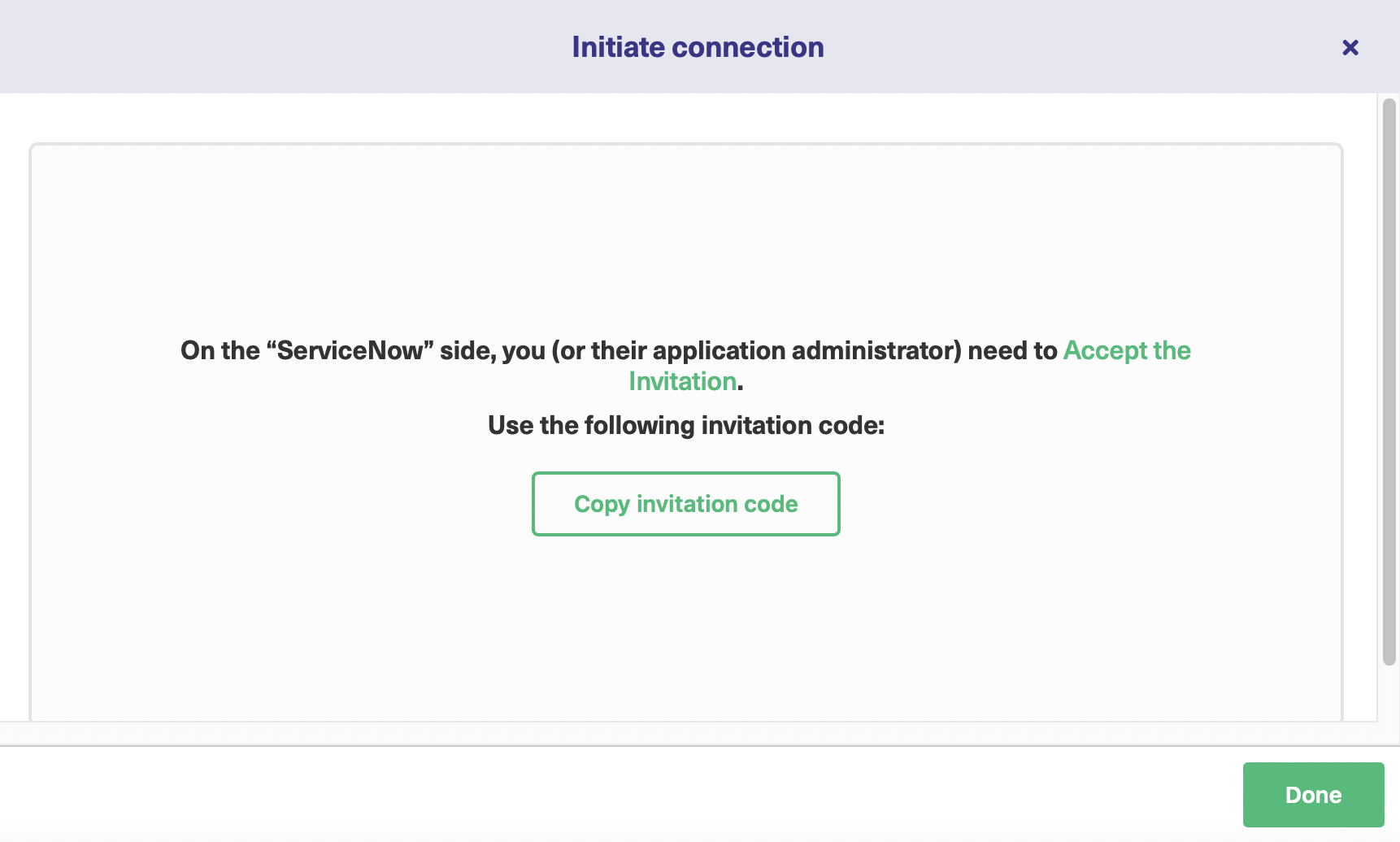
Copy this invitation code. Head over to your ServiceNow instance.
Now, this time, click the “Accept invitation” button in the “Connections” screen.

Paste the invitation code you just copied.
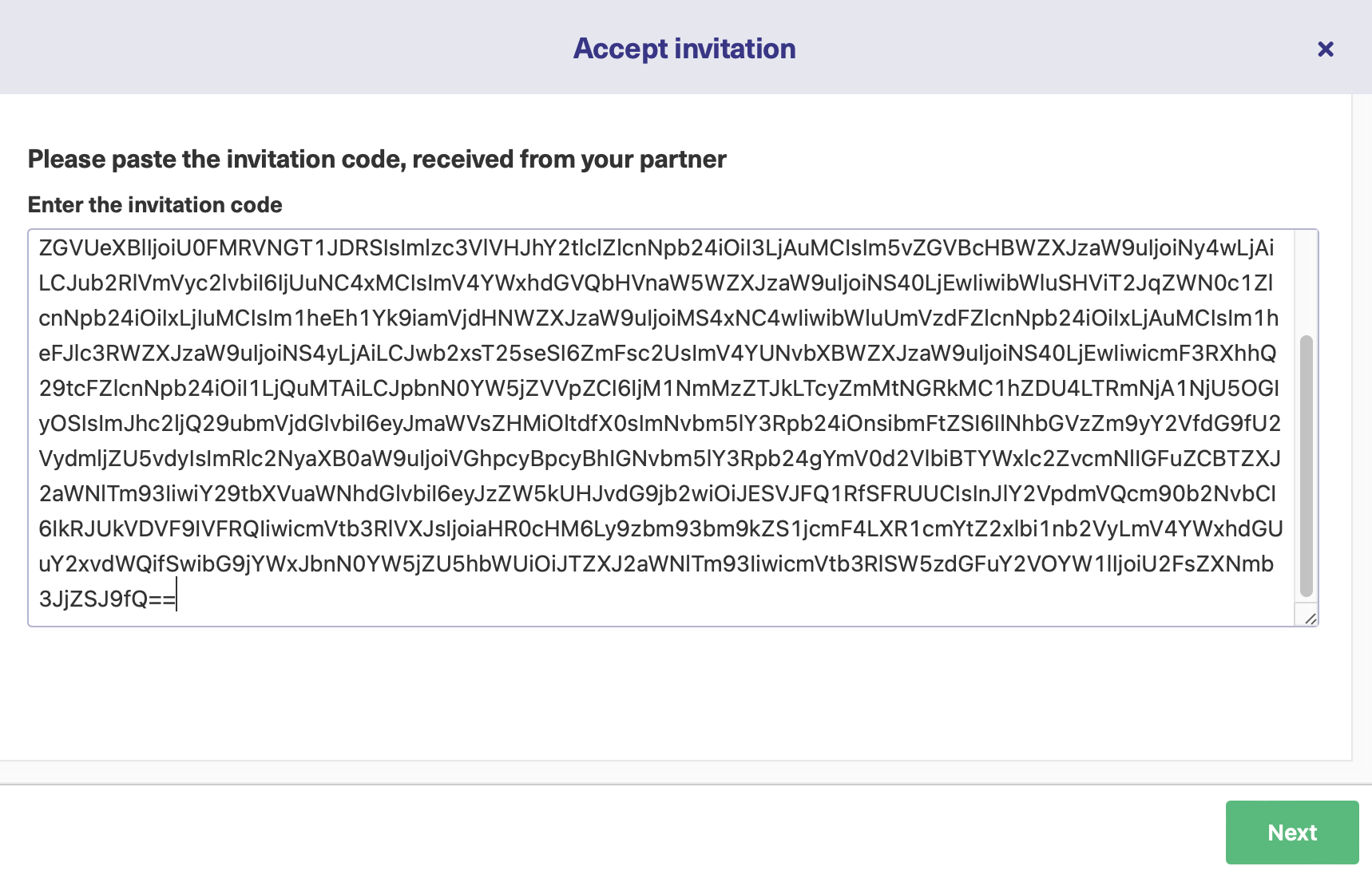
That’s all, you have successfully set up a connection between Freshdesk and ServiceNow.

Step 4: Configure the Sync Rules
Once your connection is in place, you can adjust it by clicking the “Edit Connection” icon or the “Configure sync” button in the screen above. In Script mode, you can access your sync rules on the “Rules” tab.

These allow you to directly control how fields are mapped to each other. That’s useful if you only want to share certain information. You can also use more advanced programming logic if required.
The exchange of information is structured into two categories of sync rules in Exalate. The ‘Outgoing sync’ defines what data is transmitted from Freshdesk to ServiceNow, while the ‘Incoming sync’ rules determine how data received from ServiceNow is interpreted in Freshdesk.
You can always modify these mappings as needed. You can also consult Exalate’s Script Helpers for assistance. You can create more complex or advanced mappings through scripting.
Use AI to Generate Scripts
Exalate also offers AI-powered Script mode, known as AI Assist. This feature is available as a chat window in both the incoming and outgoing sync rules tabs.
You can input your sync requirements in the chat, and AI Assist will generate the scripts for you based on your input, current configurations, and Exalate’s scripting API.
Keep in mind that AI Assist, like any AI tool, may not always be perfect. Be as clear and detailed as possible with your prompts to get the best results.
For example, if you want to map and sync statuses between Freshdesk and ServiceNow, you can enter a request like:
“I want to map statuses between Freshdesk and ServiceNow. Create a status mapping that sets New to Open, Working to Pending, and Closed to Resolved.”

Give it a moment, and the script will be generated.
Lines marked in red indicate deletions from existing scripts, while green lines show new additions. You can either accept or reject these suggestions. If necessary, adjust your prompt, and once everything looks good, publish your changes.
Step 5: Set up Triggers to Control Synchronization
You can also create triggers. These define which tickets are synced. You can access the Triggers tab from the left-hand Exalate console [as shown in the image below] or by clicking the Triggers option while editing the connection.

You could sync entities of a certain type, like incidents, change requests, problems, etc., or of a high priority. It’s up to you. You can also define multiple triggers with different conditions, and switch triggers on and off as required.
In Freshdesk, you write queries using fields supported by the List All Tickets endpoint. In ServiceNow, it’s done using ServiceNow search syntax.
Step 6: Activate the Synchronization
Now the synchronization is active, sit back and let it do the work for you. Synchronization happens automatically, but not immediately, so give it a few minutes to update before checking it.
Conclusion
Freshdesk and ServiceNow are both capable platforms, able to take a central place in managing your team’s needs. But they have different strengths. An integration can help teams take advantage of each of them.
There are several things to consider, though, and overcoming them will be key to the effectiveness of your solution. Get it right and you can seamlessly connect with colleagues and customers alike.
Exalate makes integration easy and is designed to solve many of the problems you can run into when getting set up. Take a look at it now, book a demo, and see how it can help ensure your integration succeeds.
Recommended Reads:
- ServiceNow Connectors: How to Keep Systems and Companies Connected
- Everything You Need to Know About ServiceNow Data Integration
- Freshdesk Jira Integration in the Age of Customer Satisfaction
- ServiceNow Integrations: Integrate ServiceNow and Other Systems Bidirectionally
- ServiceNow to ServiceNow Integration: How to Set up a Two-Way Sync


